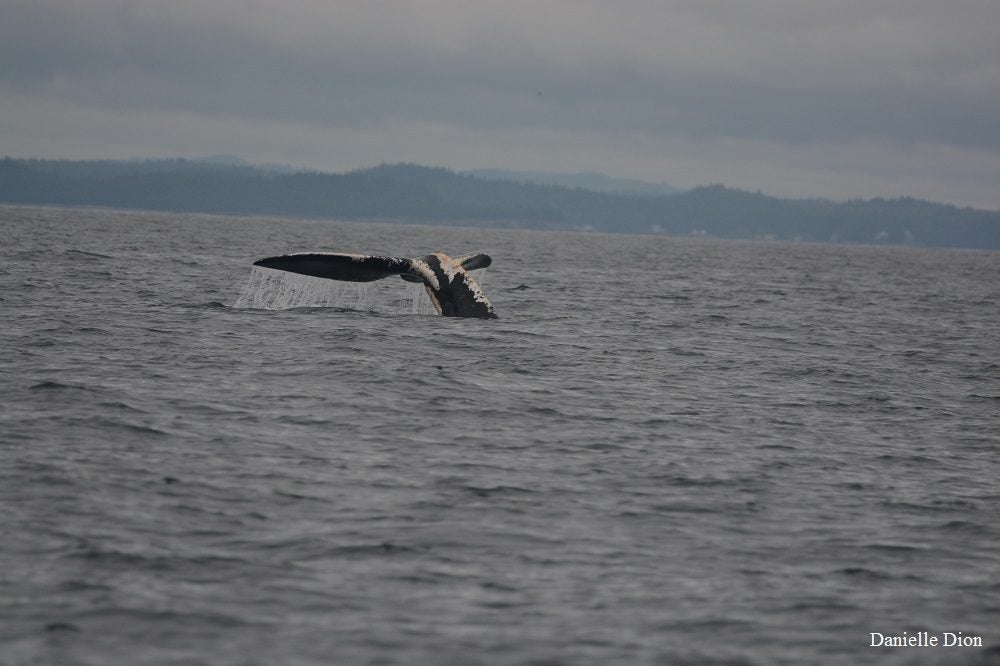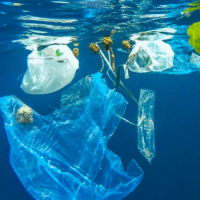July 31, 2017
Off the Coast of Atlantic Canada, Right Whales Are Dying at an Unprecedented Rate
Estimated reading time: 0 minutes
Stephanie Sardelis is a Marine Mammalogist with a Master’s Degree in Conservation Biology from Columbia University.
North Atlantic right whales are one of the most endangered animals on earth. Historically exploited by commercial whaling, the current population of about 500 whales is critically low. Right whales are particularly vulnerable to being fatally struck by ships and entangled in fishing nets or ropes because they are slow swimmers and spend the majority of their time near the surface. They are also difficult for mariners to spot because of their dark colour and lack of a dorsal fin. As a result, 83 per cent of right whales have scars from encounters with boats or fishing gear,
The risks that human activities pose to right whales have become even more apparent this summer after a record-breaking number of deaths were reported in the southern Gulf of St. Lawrence. To date, at least nine carcasses have been found dead in a little over a month – the largest mortality event of right whales in North America. Nearly two per cent of their already small population has died in little over a month. Necropsy results suggest blunt trauma from ship collision and “chronic entanglement” were the probable causes of death.
Underlying these causes of death are broader ecosystem and economic factors. Right whales appear to be moving into the Gulf of St. Lawrence. Although scientists have not determined what is causing this behaviour, it is possibly a response to changes in the distribution of their prey. Without a thorough understanding of their movements, ship traffic cannot be effectively rerouted or slowed to avoid fatal collisions. Furthermore, innovative, stronger fishing gear that has been developed to meet growing consumer demand for fish is increasingly difficult for whales to break free from if they become entangled.
In response to these reoccurring right whale deaths, several short-term, immediate solutions are being implemented. Fisheries and Oceans Canada (DFO) closed the Gulf snow crab fishery two days early to protect whales from further entanglement. DFO also urged ships to reduce their speed along the Laurentian Channel until the end of September, when right whales usually leave the North Atlantic and travel south to breed. Additionally, many coastal organizations disentangle whales manually, however this work is very dangerous.
These are temporary solutions though, and the larger problems still need to be addressed.

“Disentanglement is not the answer: we need to prevent entanglements from happening in the first place,” says Danielle Dion, an expert naturalist with Quoddy Link Marine in St. Andrews, New Brunswick. “[Coastal communities are] intrinsically connected to the [ocean] through fishing, ecotourism, aquaculture, scientific research, and pleasure crafts. Many people feel very emotional about whales, connected in their own special way. The vast majority of people, including the fishers whose gear is entangling whales, never want to see whales entangled.”
To fulfill the communal goal of balancing marine mammal conservation and the livelihoods of people employed by fisheries, permanent actions are necessary.
Up to 10.3 million tonnes of sea life is unintentionally caught each year around the world, captured in nets, lines and other gear, including endangered and threatened species like right whales. To address this, Canada needs to start collecting adequate data and developing a national plan to reduce these needless deaths
Another important part of protecting species from accidental entanglement is looking at what fishing gear is being used. For instance, a slight reduction in rope strength could allow whales to break free from entanglement and reduce life-threatening injuries by 72 per cent, while still maintaining enough strength for effective fishing. The fishing industry is driven by consumer demand, so buyers hold the power to make sustainable choices and encourage ecofriendly-fishing methods.
Despite the sorrow surrounding the right whale deaths in the Gulf of St. Lawrence, Danielle is encouraged that mainstream media are sharing the story across Canada. Hopefully, it will increase public awareness about entanglement and educate people about how we can collectively prevent future harm to whales.
“With entanglements, less than 10 per cent are ever reported and whales live basically their entire lives underwater,” says Danielle. “The public needs to know what’s happening… [We need to] let them know how our current fishing practices are affecting marine wildlife and how some simple changes at home, even if they live thousands of kilometers away from the ocean, can have positive effects.”
To further protect right whales, we also need to improve our understanding of the ecosystems that right whales play an integral part in. While right whale conservation efforts have previously focused on the Bay of Fundy and Roseway Basin, the reoccurring deaths in the Gulf of St. Lawrence highlight the lack of understanding surrounding whale activity in the region.
Although the incidents of this summer have been tragic, the future holds promise for a more balanced, protected and healthy marine environment. Find out more about reducing bycatch and join Oceana Canada this summer to explore the Gulf of St. Lawrence.
Stay up to date on the plight of North Atlantic right whales and help us save them from extinction by visiting Oceana.ca/RightWhaleToSave.

